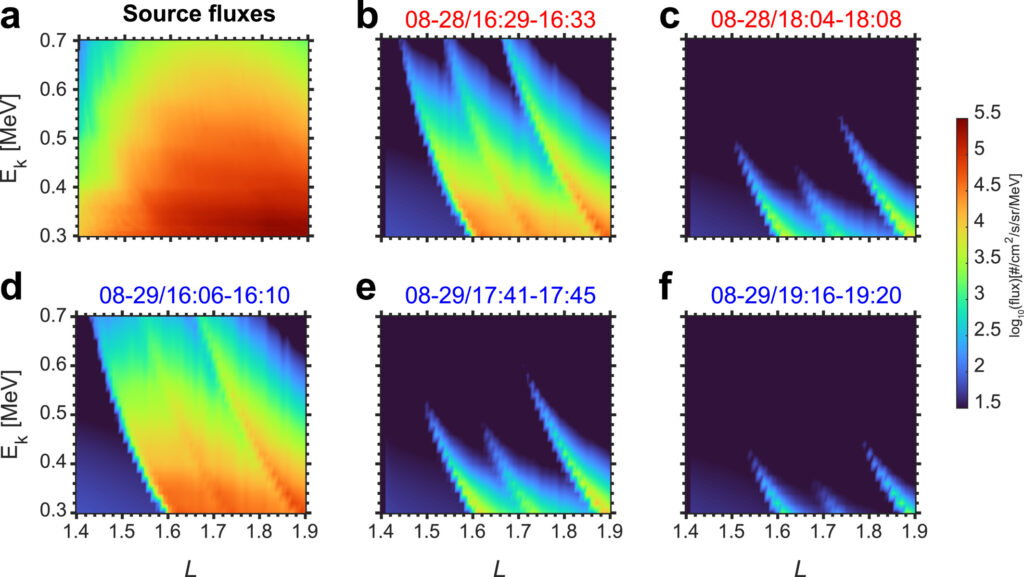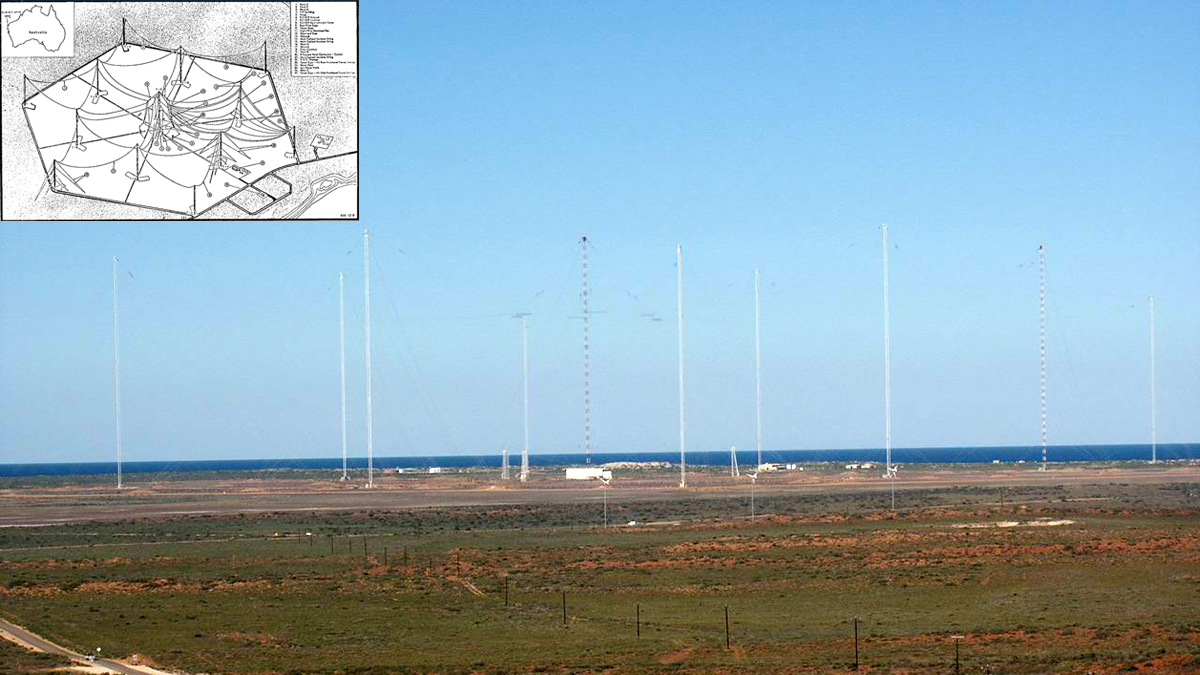Editors’ Highlights are summaries of recent papers by AGU’s journal editors.
Source: AGU Advances
Very low frequency (VLF, 3-30 kHz) transmitters were built worldwide to communicate with submarines because their signals can penetrate a few tens of meters into the seawater. While these VLF transmitter signals usually propagate within the Earth-ionosphere waveguide, the ionospheric electron density is low on the nightside, therefore some transmitter signals can leak into the Earth’s magnetosphere. These signals then interact with energetic electrons, causing loss to the atmosphere. High-energy and time resolution measurements by the electron detector on the CIRBE CubeSat show multiple precipitation wisps reproduced by simulations.
Xiang et al. [2024] note that energetic radiation belt electrons can have detrimental effects on spacecraft and astronauts. Scattering by higher power VLF wave transmitters used for communications has been considered for radiation belt ‘remediation’, reduction of fluxes, should they become artificially high and threaten space assets.

Citation: Xiang, Z., Li, X., Baker, D. N., Mei, Y., O’Brien, D., Hogan, B., et al. (2024). Earth-based transmitters trigger precipitation of inner radiation belt electrons: Unveiling observations and modeling results. AGU Advances, 5, e2024AV001354. https://doi.org/10.1029/2024AV001354
—Mary Hudson, Editor, AGU Advances

